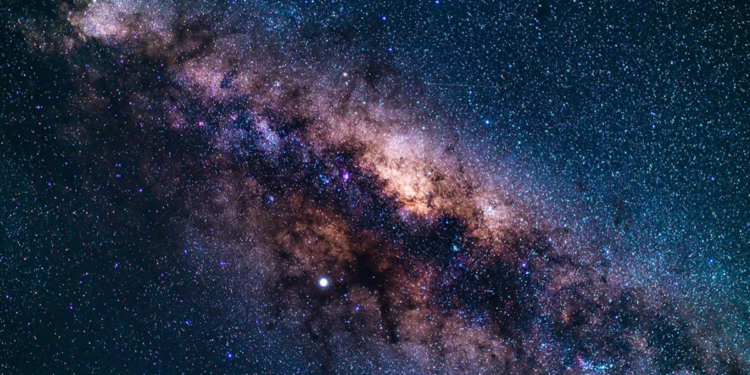For decades, dark matter has loomed as the cosmos’ greatest enigma. This invisible entity, comprising a staggering 95% of the universe, exerts a powerful gravitational pull on visible matter, shaping galaxies and influencing the universe’s expansion. Yet, it remains frustratingly concealed from our most sophisticated telescopes and instruments. We can only infer its existence through its gravitational influence, a cosmic phantom haunting the grand narrative of the universe.
A Paradigm Shift: Rethinking the Relationship Between Dark and Visible
For a long time, the prevailing theory depicted dark matter and the visible universe as separate entities, evolving independently. However, recent research by Pran Nath, a physicist at Northeastern University, challenges this assumption. Through a series of groundbreaking computer simulations, Nath and his team propose a revolutionary theory: these seemingly distinct realms may have co-evolved from the very first moments following the Big Bang.
A Universe Forged in Interaction: The Big Bang and the Intertwined Fate of Dark and Visible
Nath’s models introduce the concept of subtle interactions between dark matter and the visible universe in the immediate aftermath of the Big Bang. These interactions, while minuscule, may have had a profound impact on the evolution of both realms. The team’s findings suggest that dark matter’s influence could explain some of the discrepancies observed in the current Standard Model of cosmology, the prevailing theory of our universe’s evolution. The Standard Model struggles to fully account for the observed rate of the universe’s expansion, for instance. By factoring in dark matter’s potential influence during the universe’s infancy, Nath’s research offers a new avenue for reconciliation.
Hot or Cold? Unveiling the Hidden Sector’s Early Conditions and Its Continued Influence
One intriguing aspect of Nath’s research delves into the temperature of the dark sector during the Big Bang. Traditionally, the visible universe is assumed to have begun in an incredibly hot state. The team’s models explore two possibilities: a hot and a cold hidden sector at the universe’s dawn. Interestingly, both models seem compatible with our current observations of the visible universe. This doesn’t necessarily mean our experiments have failed. It simply highlights the limitations of our current technology. The ability to differentiate between the hot and cold hidden sector scenarios hinges on instruments with a level of precision beyond our current capabilities.
The Quest for Answers: Pushing the Boundaries of Observation
Powerful telescopes like the James Webb Space Telescope hold immense promise for future observations. With its ability to peer deeper into the cosmos and detect fainter signals, the Webb telescope may offer the key to differentiating between the hot and cold hidden sector scenarios. This distinction is crucial, as it could significantly impact our understanding of dark matter’s properties and its ongoing influence on the universe’s structure.
The Symphony of the Cosmos: Unveiling the Hidden Dance for a Deeper Understanding
Nath’s research delves into profound questions about our place in the cosmos. We yearn to comprehend not just how the universe functions, but why it exists at all. By unraveling the mysteries of dark matter and its potential connection to the visible universe, we inch closer to these grand answers. It’s a testament to the enduring human spirit, forever seeking to understand the grand tapestry of existence.

As our observational capabilities evolve, the hidden dance between dark matter and the visible universe will continue to be revealed, offering a deeper understanding of our cosmic origins and the forces that continue to shape the ever-expanding universe.



















